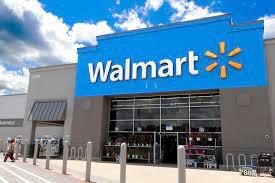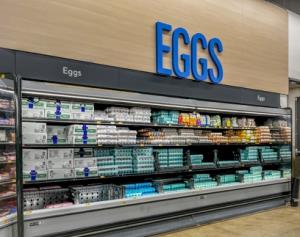 Following the May 17th Walmart Q1 release, analysts questioned CEO, Doug McMillon, and John R. Furner, President and CEO of Walmart U.S., during the subsequent conference call. McMillon noted that, “We want customers to have lower prices on food and we will partner with suppliers on the food and consumable side to bring those costs down.”
Following the May 17th Walmart Q1 release, analysts questioned CEO, Doug McMillon, and John R. Furner, President and CEO of Walmart U.S., during the subsequent conference call. McMillon noted that, “We want customers to have lower prices on food and we will partner with suppliers on the food and consumable side to bring those costs down.”
McMillon believes that customers will be under pressure as a result of inflation opining, “They need our help” adding, “We will stay focused on opening price-point food items to assist customers at the lower end of the income scale to be able to afford to feed their families.” Furner stated, “We’ve got to make sure we’re doing everything we can with our suppliers to manage our costs so that we can keep food pricing in a great spot for our customers.” Furner committed the company to, “work together with our supply base in proteins and dairy to keep costs low”.
As the largest food retailer, Walmart will set the standard for a retail environment in which higher costs for food items cannot be passed onto consumers. Analyst, Robert Moskow, of Credit Suisse, believes that Walmart will be less flexible with vendors on food pricing and that suppliers will be under considerable pressure to keep prices low so that Walmart can maintain revenue but at the same time, achieve acceptable gross margins. This presumably will be at the expense of suppliers. It is noted that for the first quarter of FY 2022, ending April 30th, Walmart gross margin fell by 3.2 percent to 24.5 percent and that operating margin was down by 24 percent to 3.8 percent compared to the corresponding quarter in FY 2021.
T here was no mention in the conference call of the inflationary pressures experienced by suppliers. Feed costs have risen and there is every prospect of future increases as a result of geopolitical events, late planting of the corn crop and continued demand for soybeans by China. In addition, labor, power and fuel costs have increased. The USDA benchmark production cost of 84.5 cents per dozen for April understates fixed costs for new cage-free facilities, and does not include costs for processing, packaging and distribution. The current high wholesale prices resulting from the depletion of 30 million hens due to HPAI has obscured in large measure, inflation in production costs. Based on the events during the HPAI epornitic of 2015, supply of shell eggs will increase in relation to demand, reducing prices and hence, margins.
here was no mention in the conference call of the inflationary pressures experienced by suppliers. Feed costs have risen and there is every prospect of future increases as a result of geopolitical events, late planting of the corn crop and continued demand for soybeans by China. In addition, labor, power and fuel costs have increased. The USDA benchmark production cost of 84.5 cents per dozen for April understates fixed costs for new cage-free facilities, and does not include costs for processing, packaging and distribution. The current high wholesale prices resulting from the depletion of 30 million hens due to HPAI has obscured in large measure, inflation in production costs. Based on the events during the HPAI epornitic of 2015, supply of shell eggs will increase in relation to demand, reducing prices and hence, margins.
It is evident that Walmart will lead other retailers in aggressive purchasing, placing margins in jeopardy. Shell egg producers will have little flexibility in negotiation under conditions of moderate over-production. The current relationship between producers and chain buyers is based on a single price discovery system representing an impediment to a free market. It is clear that the benchmark price amplifies both downward and upward swings as at present. Over the long-term the single benchmark price functions to the detriment of the industry. Grain-based pricing is not generally beneficial to all producers. EGG-NEWS has consistently advocated for a CME quotation on Midwest large as a more representative and equitable basis for pricing. Analysts expect that Walmart will use their volume to pressure suppliers and adopt what Robert Moskow characterizes as an “inflexible stance” on pricing.